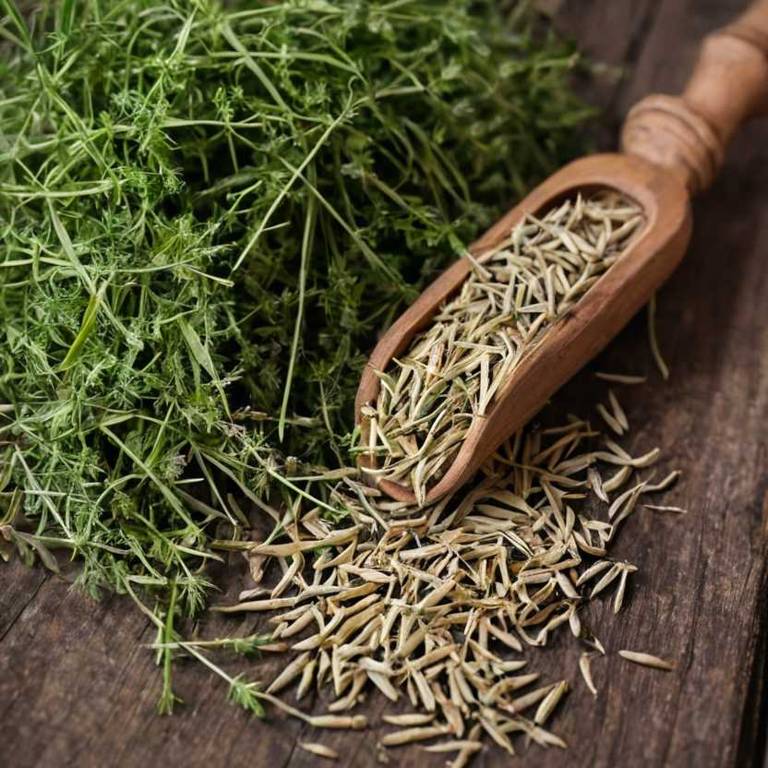By Leen Randell
Updated: Jul 21, 2024
10 Medicinal Constituents Of Agropyron Repens (Couch Grass)

Agropyron repens has active constituents such as flavonoids, phenolic acids, and alkaloids.
These compounds exhibit anti-inflammatory, antimicrobial, and antioxidant properties, which can aid in treating skin irritations, wounds, and respiratory issues.
The constituents can improve lives by reducing the severity of eczema and acne, promoting faster healing of wounds, and alleviating symptoms of asthma and bronchitis.
This article explains in details the 10 best active constituents of Agropyron repens .
1. Beta-sitosterol
Agropyron repens beta-sitosterol is a plant sterol found in its leaves and stems.
It has been extensively studied for its potential health benefits, including anti-inflammatory, antioxidant, and immunomodulatory activities. Beta-sitosterol has been shown to inhibit the growth of certain cancer cells and may help reduce cholesterol levels by binding to bile acids in the gut, reducing their reabsorption into the bloodstream.
Additionally, it has been used traditionally to treat various ailments, including arthritis and skin conditions.
2. Ferulic acid
Agropyron repens ferulic acid is a phenolic compound that has been isolated from its roots.
It exhibits various biological activities, including antioxidant, antimicrobial, and anti-inflammatory properties. Ferulic acid has been shown to inhibit the growth of certain tumor cells, making it a potential natural agent for cancer treatment.
Additionally, it has been reported to have neuroprotective effects, suggesting that it may be beneficial in the prevention or treatment of neurodegenerative diseases.
3. Kaempferol
4. Quercetin
Agropyron repens quercetin is a flavonoid compound found in its roots and leaves.
This bioactive molecule has been extensively studied for its medicinal properties, including anti-inflammatory, antioxidant, and antimicrobial activities. Quercetin has been shown to exhibit potent inhibitory effects on enzymes involved in various diseases, such as cardiovascular disorders, cancer, and neurodegenerative diseases.
Its potential therapeutic applications are being explored for the treatment of chronic conditions and disease prevention.
5. Apigenin
Agropyron repens apigenin is a flavonoid compound extracted from its roots and leaves.
This bioactive compound has been studied for its various pharmacological activities, including antioxidant, anti-inflammatory, and antimicrobial properties. Apigenin has also been found to possess antiproliferative effects on certain cancer cell lines, suggesting potential applications in the treatment of diseases.
Further research is needed to fully understand the mechanisms behind its biological activities.
6. Luteolin
Agropyron repens luteolin is a flavonoid compound that has been isolated from its rhizomes.
It exhibits potent antioxidant and anti-inflammatory activities, making it a potential therapeutic agent for various diseases. Luteolin in Agropyron repens has also shown cytotoxic effects against cancer cells, suggesting its use as an anticancer agent.
Its unique properties make it an area of ongoing research in the fields of medicine and pharmacology.
7. Chlorogenic acid
Agropyron repens chlorogenic acid is a phenolic compound that has been isolated from its roots and stems.
It exhibits antioxidant and antimicrobial properties, making it potentially useful for the prevention of diseases such as cancer, diabetes, and cardiovascular disorders. Chlorogenic acid has also been shown to have anti-inflammatory effects and may be effective in reducing the severity of conditions like arthritis.
Its bioactive compounds make it a promising natural remedy with various therapeutic applications.
8. Caffeic acid
Agropyron repens caffeic acid is a bioactive compound isolated from its leaves and stems.
It has been extensively studied for its antioxidant, anti-inflammatory, and antimicrobial properties. Caffeic acid has been shown to inhibit the growth of certain bacteria and fungi, while also exhibiting neuroprotective effects by scavenging free radicals and reducing oxidative stress.
Its potential therapeutic applications include treating various diseases such as cancer, Alzheimer's, and cardiovascular disorders.
9. Sinapic acid
10. Gallic acid
Agropyron repens gallic acid is a bioactive compound extracted from its rhizomes.
It has been reported to exhibit antioxidant and antimicrobial properties, which may contribute to the plant's traditional use in folk medicine.
Additionally, gallic acid has been shown to have anti-inflammatory and anticancer activities, making it a promising area of research for the development of new therapeutic agents.